What Is Used to Create the Putrid Smell in LiquidAssTM Fart Spray?
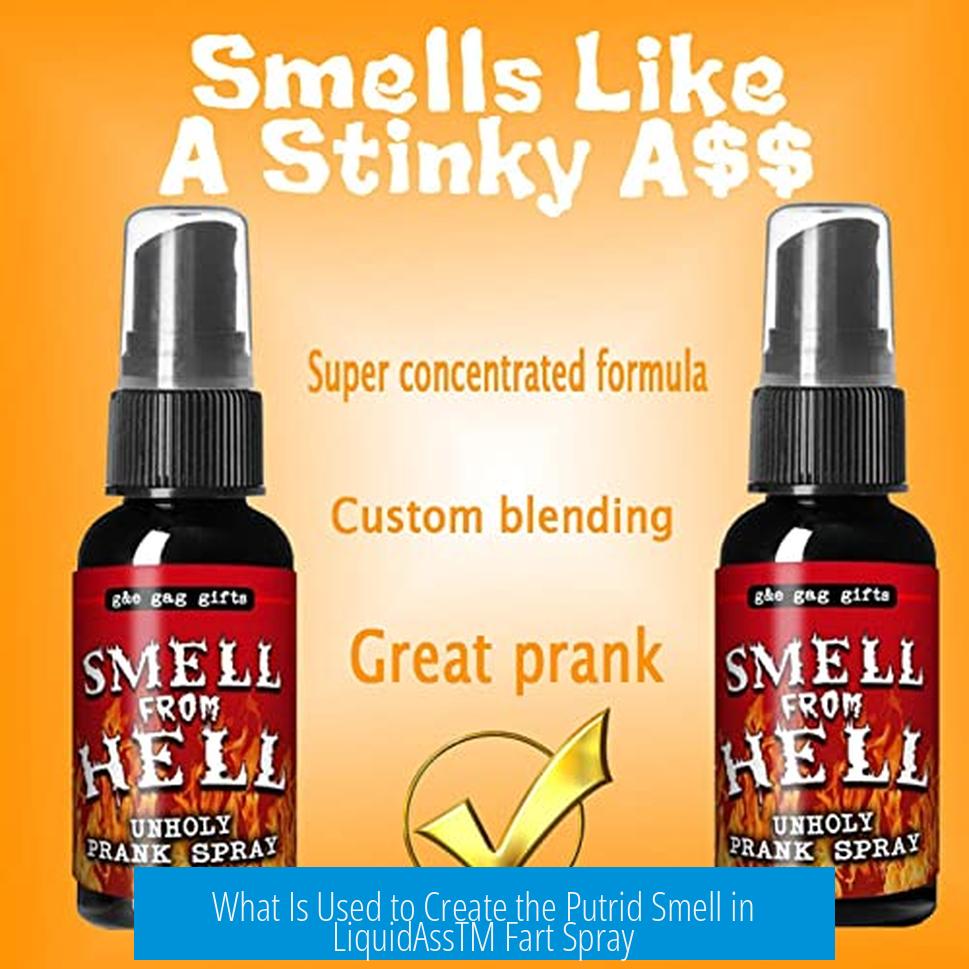
LiquidAssTM fart spray obtains its putrid smell primarily from a proprietary blend of sulfur-containing compounds, indole and skatole derivatives, and other foul-smelling organic chemicals that mimic authentic fecal odors. These components produce a highly realistic and offensive scent resembling rotten eggs, fresh feces, and decaying organic matter without employing bacteria or actual flatulence.
Chemical Compounds Responsible for the Odor
LiquidAssTM uses a complex mixture of chemicals known to produce malodorous effects. The primary contributors include:
- Ammonium Sulfide: A key ingredient with a strong stench similar to rotten eggs. This sulfur derivative is central to the spray’s signature foul odor.
- Hydrogen Sulfide (H2S): Another sulfur compound notorious for its rotten egg smell, often associated with flatulence and putrefaction.
- Thiols and Mercaptans: Highly odorous sulfur compounds that occur naturally in decomposition and human waste, contributing sour, pungent notes.
- Indole and Skatole (3-methylindole): Organic compounds derived from the breakdown of tryptophan in the gut, with a strong fecal scent. These compounds are common in nature and have been characterized scientifically for their intense smell.
- Butyric Acid: A long-chain carboxylic acid known for its rancid, sour odor typical in rancid butter and vomit, further enhancing the spray’s realistic fecal aroma.
- Putrescine and Cadaverine: Polyamines produced during tissue decay responsible for smells reminiscent of rotting flesh, sometimes included or mimicked in synthetic formulations to increase the sensation of decay.
Formulation and Trade Secrets
The exact recipe behind LiquidAssTM remains confidential. The company’s safety data sheets (SDS) list ingredients as proprietary or natural without detailed disclosure. This is standard practice in the industry to protect formulas from imitation.
Manufacturers typically collaborate with specialized scent consultants and sometimes emergency medical professionals. These experts help create realistic odors that mimic biological conditions accurately. Such partnerships ensure the spray’s smell evokes a genuine reaction based on real-world experiences.
How LiquidAssTM Differs from Other Odor Products

LiquidAssTM stands out due to:
- Authenticity: The smell closely simulates actual human flatulence mixed with the odors of fresh feces and decaying tissue.
- Potency: The scent is stronger and longer-lasting than many standard stink bombs or simpler fart sprays, making it highly effective as a prank product.
- Complexity: The combination of sulfur-based chemicals, indoles, and organic acids produces a layered odor profile rather than a single-note stench.
Debunking Common Myths
Despite rumors, LiquidAssTM does not contain bacteria or genuine human flatulence. The smell is chemically synthesized rather than biologically sourced. Stories about collecting actual human farts in bulk for use in sprays are unfounded. The product relies solely on artificial compounds to simulate the odors.
The Science of Malodor Creation
Human foul smells come from hundreds of volatile organic compounds (VOCs). The most offensive usually contain sulfur or nitrogen. Compounds like indole and skatole form from amino acid breakdown in intestines and signal decay and waste matter. These are flavor and fragrance industry standards for fecal or animalic notes.
Perfumers sometimes use unpleasant compounds in trace amounts to add depth or realism. For example, butyric acid reproduces smells that evoke sour dairy or rancid butter. Thiols can imitate garlic or skunk-like odors. Combining these components in precise ratios allows products like LiquidAssTM to authentically simulate repulsive odors.
Summary of Key Odor-Generating Ingredients in LiquidAssTM
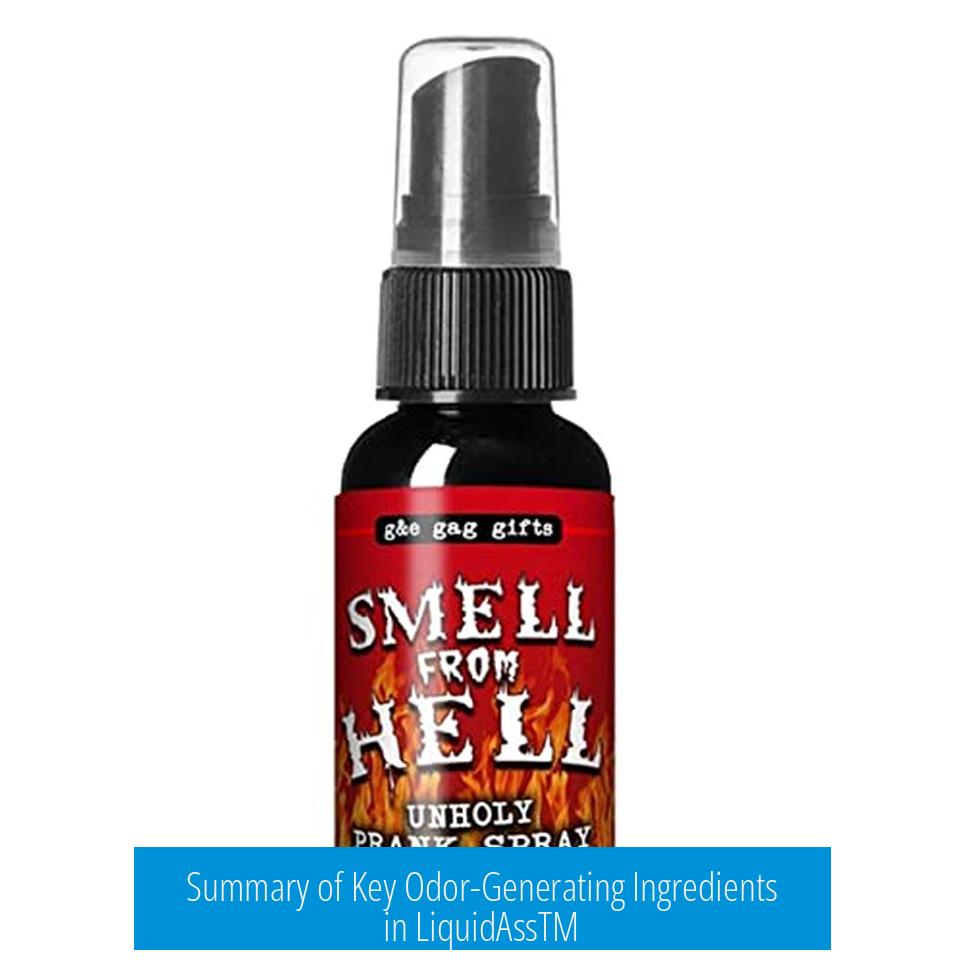
| Ingredient | Role in Smell | Description |
|---|---|---|
| Ammonium sulfide | Primary sulfur foul odor | Resembles rotten eggs; volatile and malodorous |
| Hydrogen sulfide (H2S) | Supplemental sulfur odor | Rotten eggs, sharp sulfur smell |
| Indole / Skatole (3-methylindole) | Fecal and decomposition notes | Common in feces, earthy bad smell |
| Butyric acid | Sour, rancid odor | Found in vomit, rancid butter odors |
| Putrescine & Cadaverine | Decay and death odor | Produced by decomposition of proteins |
Conclusion
LiquidAssTM fart spray uses a scientifically backed blend of sulfur compounds, indolic chemicals, carboxylic acids, and decay-related polyamines to generate a potent and realistic odor. Its formulation remains proprietary, but it is chemical-based and does not involve biological matter.
The carefully crafted scent profile ensures an authentic and long-lasting putrid smell that outperforms simpler stink bombs. Collaboration with scent experts and emergency responders helps achieve the highest fidelity to natural human and decomposing odors for prank purposes.
- Ammonium sulfide is the primary chemical creating the rotten egg smell.
- Indole and skatole provide fecal scent authenticity.
- Butyric acid adds sour, rancid notes typical in decomposition.
- Putrescine and cadaverine contribute a death-like odor quality.
- The formula is proprietary and chemically synthesized, without bacteria or real flatulence.
- LiquidAssTM offers a stronger and more realistic putrid smell than common fart sprays.
What Is Used to Create Such a Putrid Smell in LiquidAssTM Fart Spray?
If you’ve ever wondered what dark magic brews up that stomach-churning, eye-watering stench in LiquidAssTM fart spray, here’s the straightforward answer: it’s a carefully crafted blend of sulfur compounds like ammonium sulfide, foul-smelling indole and skatole derivatives, nasty long-chain acids such as butyric acid, and other putrid organic molecules designed to replicate the raw, authentic smell of human feces—without any actual toilet visits involved.
Now that the secret’s out, let’s dive deep into the science, smell, and sly behind-the-scenes story of this legendary stinker.
The Chemistry Behind the Putrid Stench: A Symphony of Nasty Molecules
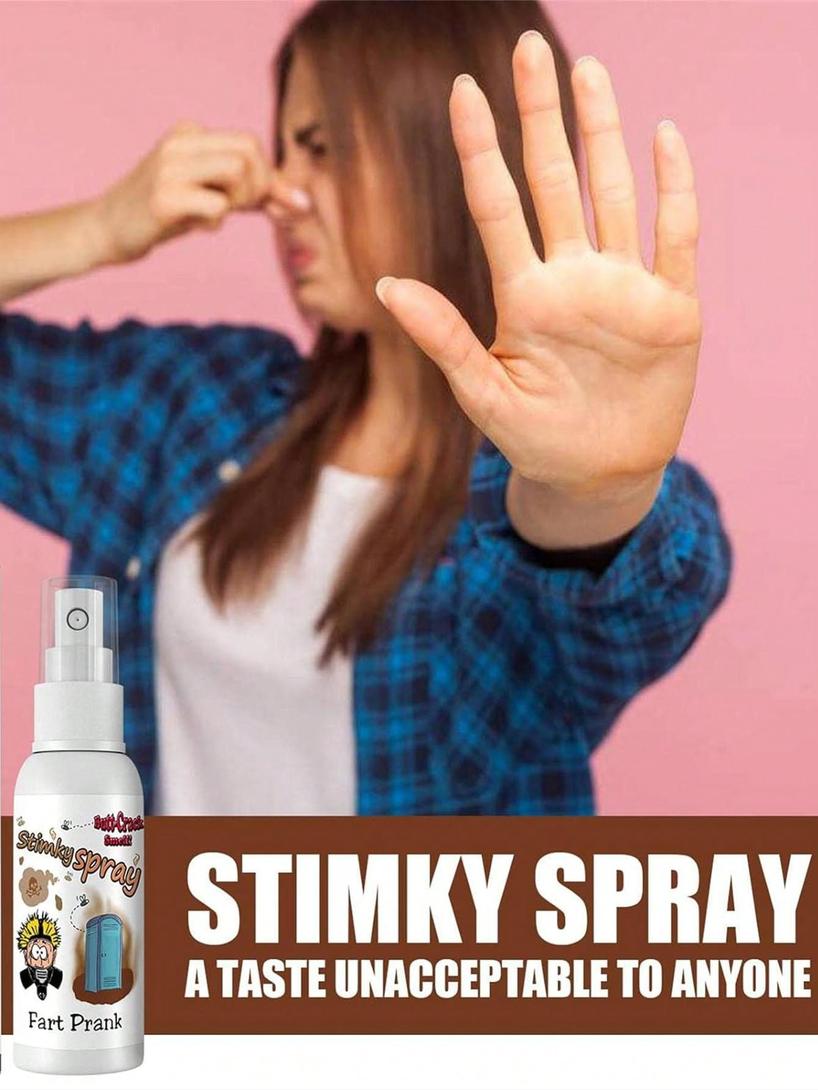
First things first. LiquidAssTM isn’t just random garbage liquid tossed in a bottle. Nope, the creators use real chemistry to mimic the exact bouquet you’d expect if your worst nightmare lurks under your seat at a dinner party.
The backbone of the smell? A mix of sulfur-based compounds. Our noses are incredibly sensitive to sulfur derivatives because they often signal “danger” in nature. Rotting eggs, burning matches, and the unmistakable “eww” of flatulence all come from this family.
- Ammonium sulfide: The primary ingredient according to the manufacturer’s information. Known for smelling like rotten eggs, this compound gives LiquidAssTM its pungent, sulfurous kick that hits your nose fast and leaves you gasping.
- Hydrogen sulfide (H2S): Another infamous sulfur compound notorious for its rotten egg odor. Although not explicit in the formula, its presence is often suspected because of the similarity in smell.
- Thiols and mercaptans: These sulfur-containing molecules smell foul beyond imagination—think skunk spray or spoiled cabbage. Their addition makes the scent complex and deeply repulsive.
But sulfur doesn’t work alone. To reach that truly fecal authenticity, LiquidAssTM employs nitrogenous compounds called indole and skatole derivatives. Now, you might be asking:
“Indole? Skatole? Sounds like mad scientist gibberish!”
Actually, indole and skatole (3-methylindole) are organic compounds naturally found in feces. Yes, these are literally the stinky chemical cousins of the stuff you want to avoid. Chemists sometimes use skatole’s distinct poop smell to make their artificial scents feel eerily real. People who have lab experience confirm these smells are uncannily identical to actual feces. Imagine a splash of jasmine oil turning to poop stench when concentrated—hello skatole!
Adding fuel to the fire are long-chain carboxylic acids, particularly butyric acid. Ever smelled rancid butter or vomit? That’s butyric acid doing its nasty job. It’s the perfect sidekick to sulfur and indoles, thickening the stench with a tangy, sour corpse vibe.
And then, lurking behind the scenes like villains in a bad horror flick, putrescine and cadaverine may also play a role. These foul-smelling diamines are produced by the breakdown of amino acids in decaying flesh. If ammonium sulfide and indoles represent the main act, putrescine and cadaverine are the encore of deathly odors.
Proprietary Secrets & Medical-Grade Authenticity
Want to decode the exact recipe? Good luck. The company keeps the exact formulation under tight lock and key, marked “trade secret.” The Safety Data Sheets (SDS) offer only vague hints, listing “proprietary” or “natural ingredients” to keep curious noses guessing.
Interestingly, these scents are no joke. They borrow from expertise in the medical field where training responders need to face the smelliest disasters—vomit, decay, feces—without gagging in the middle of a crisis. Consultants with paramedic backgrounds help shape the sprays, ensuring the smell is disturbingly authentic and reliably gag-inducing. So when your prank victim wails, know that professionals helped nail this putrid masterpiece.
Myths Debunked: No Farty Volunteers in a Room
There’s a hilarious urban legend about a hundred people locked in a room farting repeatedly to bottle the smell. Sorry to burst that bubble—but no, nobody’s human orifice is on the payroll here.
LiquidAssTM’s stink comes from chemistry, not biology. No bacteria or human samples involved, so it’s safe—just disgustingly effective.
How Does LiquidAssTM Compare to Other Stink Bombs and Sprays?
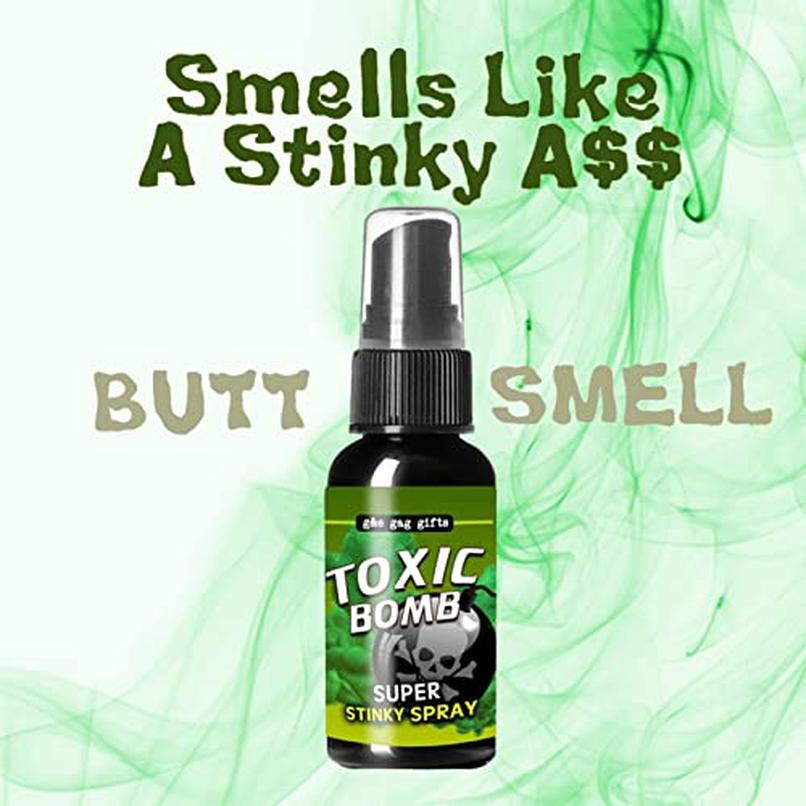
Here’s the kicker: While many stink products rely mostly on sulfur’s rotten egg cloud, LiquidAssTM goes beyond. From user feedback and sensory tests, it boasts:
- A more authentic butt-crack, poo-like aroma—combining hints of green poo, fresh dung, and dead animal whiffs.
- Longer-lasting potency that lingers longer than standard fart bombs.
- A complex blend of foul notes—sulfur meets decay meets actual fecal odor for a multi-layered experience.
In other words, it’s the Lamborghini of prank sprays. If typical stink bombs make you grimace, LiquidAssTM causes temporary nasal trauma (in a fun way, we hope).
Unpleasant Chemicals in the World of Scents: A Paradoxical Love Affair
Here’s a fun fact: some smells considered awful in real life are used in tiny amounts in perfumery to *enhance* fragrances. For example, butyl compounds that smell like rotten cheese might add that curious depth to a banana scent. Aldehydes with “rancid cake” vibes show up in chocolate and ink accords.
This mix of nasty and nice hints at why LiquidAssTM creators balance sulfur and decay notes carefully, making that putrid smell remarkably potent yet scientifically controlled—not random garbage stew.
The Science & Experience: Why Does This Smell Get Under Your Skin?
Our brains have evolved to respond strongly to smells linked with danger—rotting food or waste triggers caution. LiquidAssTM taps into that primal reaction perfectly. Its molecules activate olfactory receptors the same way as real fecal matter and decay, triggering disgust and recoil.
Users often describe the smell as “synthetic rotten baby diarrhea” or the rank air around sun-rotted plants. If you’ve ever shoveled compost or forgotten a jar of sunflower stalks in water, LiquidAssTM’s smell isn’t far off.
And the stench endures, with reports of bottles still smelling potent over a decade later. So you get both an immediate shock and a lingering, haunting echo.
Practical Tips for Handling LiquidAssTM
- Use sparingly: A little spray goes a long way. Your prank victims will feel like they’ve traversed a landfill.
- Ventilate afterward: Open windows and run fans post-prank to restore fresh air, unless you want to test your friends’ nasal resilience.
- Store carefully: Keep bottle tightly sealed—this stuff does not evaporate quietly.
- Know your audience: Perfect for practical jokes, but beware the wrath of anyone with a weak stomach or strong nose.
Closing Thoughts: The Art and Science of Smelly Innovation
Behind the laughter and gags, LiquidAssTM fart spray showcases chemical artistry at its most stinky. The blend of ammonium sulfide, indole and skatole derivatives, butyric acid, and other noxious compounds creates a hyper-realistic stench that fools the brain and body alike.
While the full formula remains cloaked in secrecy, the science and sensory evidence point to a sophisticated, medically-influenced approach rather than crude flatulence farming. So next time someone lets out a cloud of LiquidAssTM, remember: it’s not just a prank—it’s chemistry, psychology, and a pinch of dark humor bottled up for maximum olfactory offense.
Feeling brave? Grab a spray and test your nasal limits. Just don’t say we didn’t warn you.
What chemical compounds create the putrid smell in LiquidAss™ fart spray?
The main chemicals are sulfur-based compounds like ammonium sulfide, hydrogen sulfide, thiols, and mercaptans. Indole and skatole derivatives also contribute, mimicking the odor of feces. These combine to produce the foul stench.
Is ammonium sulfide the primary ingredient in LiquidAss™?
Yes, ammonium sulfide is commonly cited as the key ingredient. It produces a strong rotten egg-like smell that gives the spray its signature foul odor.
Does LiquidAss™ smell like real human feces?
LiquidAss™ smells like a mix of butt-crack funk, dead animal, and fresh poo. Its formulation aims to replicate the authentic odor of human flatulence and feces very closely.
Are there bacteria or natural waste products in LiquidAss™?
No, the spray is chemical-based and contains no bacteria or actual waste. The foul smell is made from synthetic and natural chemicals designed to imitate real odors.
How does LiquidAss™ differ from other fart sprays?
LiquidAss™ has a more intense, longer-lasting stink. It balances genuine fecal odors with sulfur compounds, surpassing typical stink bombs and other fart sprays in authenticity and potency.


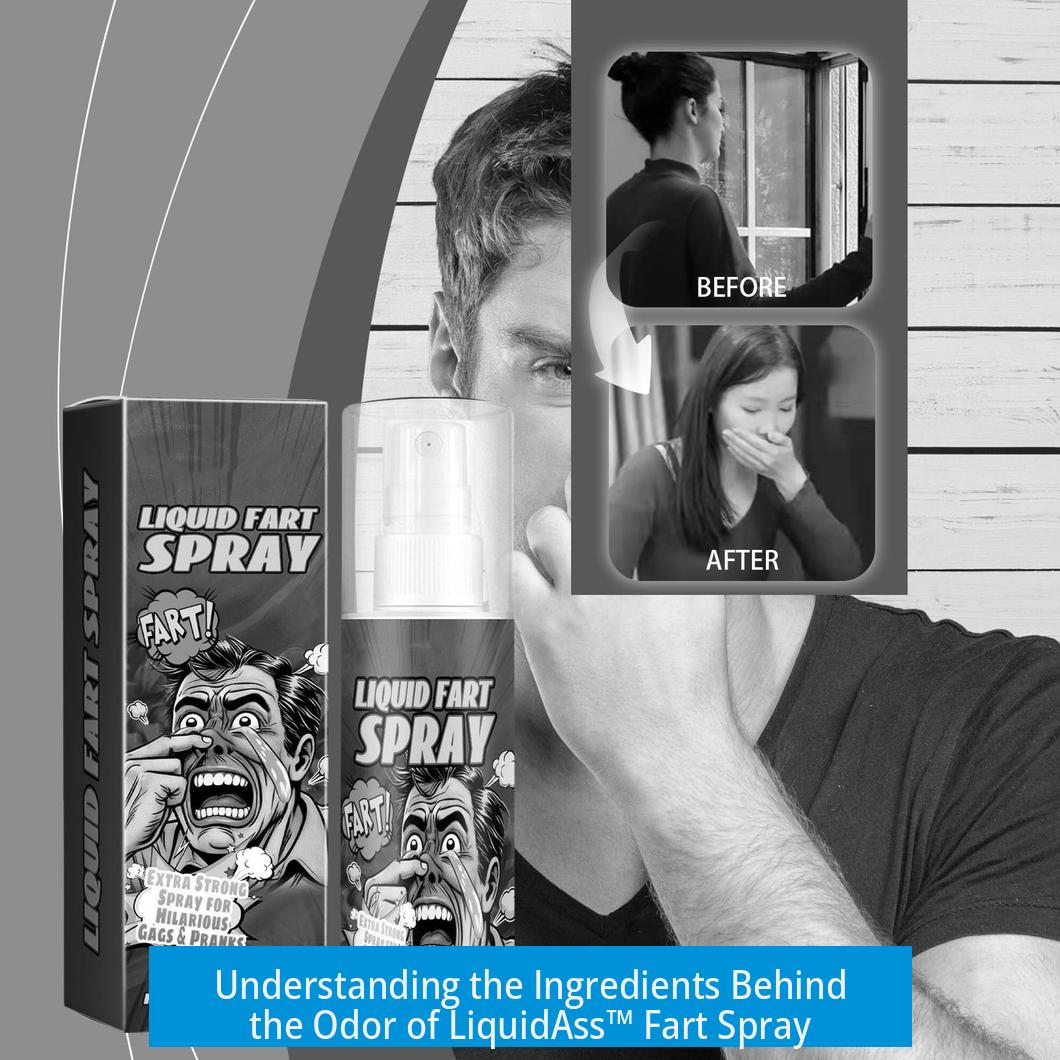
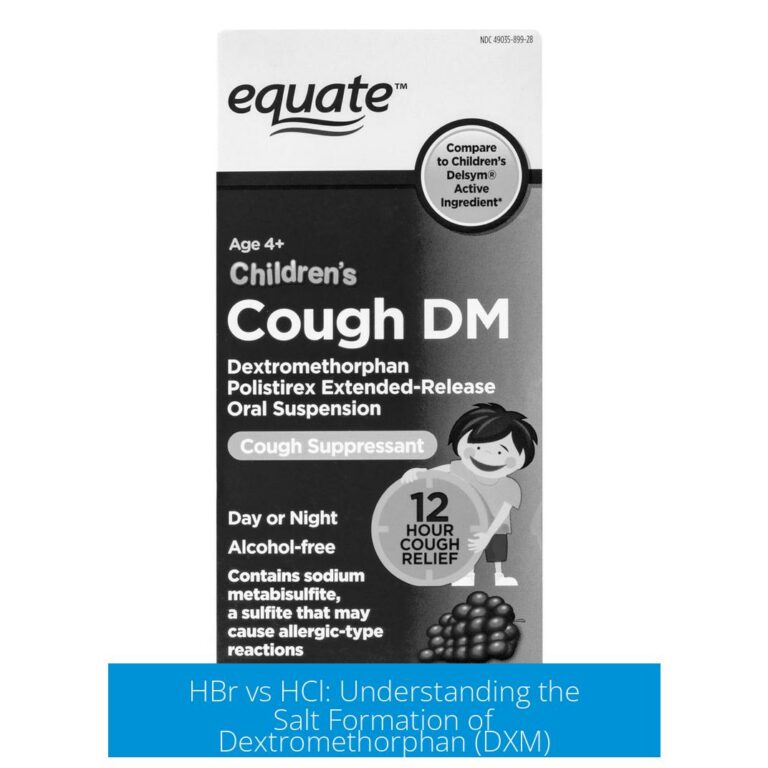
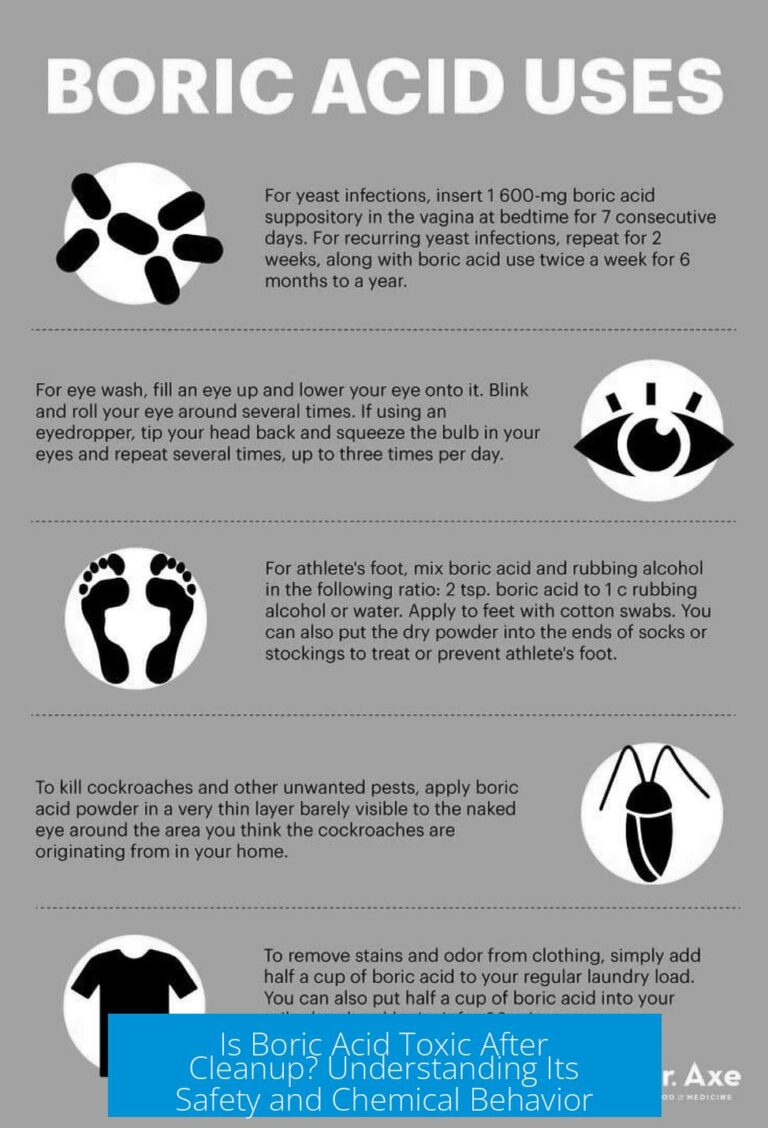
Leave a Comment